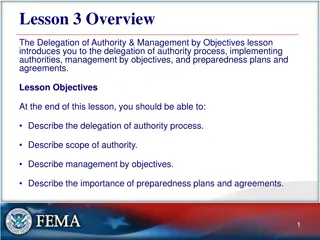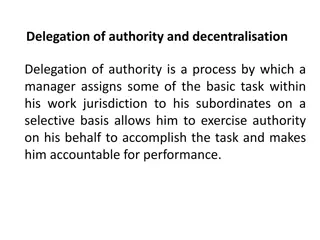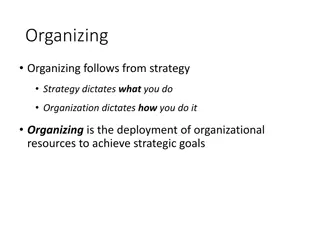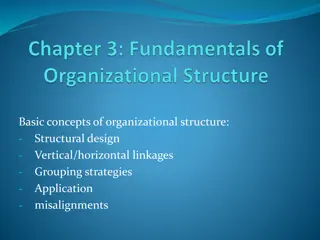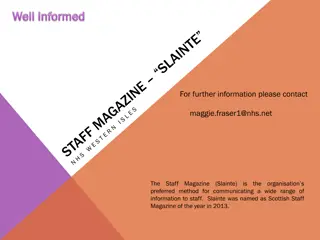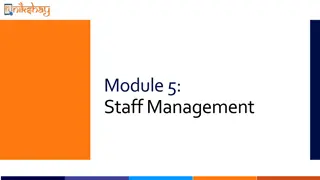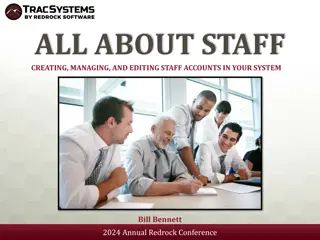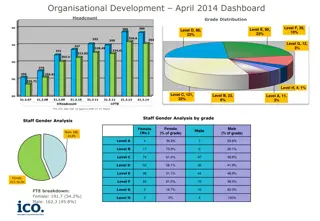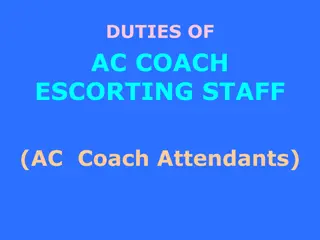Understanding Line and Staff Authority in Organizational Structure
Line authority flows from top to bottom in an organization, while staff authority is provided by specialists to advise line managers. Staff members offer expert advice and support to enhance the efficiency of line officials. Different types of staff positions exist, such as personal staff, specialized staff, and general staff, each serving a unique purpose. The line and staff organization system emphasizes specialization, bringing expert knowledge to management and operating problems. Advantages include sound managerial decisions and relief for line managers from specialized functions. However, the system also presents challenges related to defining duties and responsibilities clearly.
Download Presentation

Please find below an Image/Link to download the presentation.
The content on the website is provided AS IS for your information and personal use only. It may not be sold, licensed, or shared on other websites without obtaining consent from the author. Download presentation by click this link. If you encounter any issues during the download, it is possible that the publisher has removed the file from their server.
E N D
Presentation Transcript
LINE AND STAFF AUTHORITY In an organization, the line authority flows from top to bottom and the staff authority is exercised by the specialists over the line managers who advise them on important matters. These specialists stand ready with their specialty to serve line mangers as and when their services are called for, to collect information and to give help which will enable the line officials to carry out their activities better. The staff officers do not have any power of command in the organization as they are employed to provide expert advice to the line officers. The 'line' maintains discipline and stability; the 'staff' provides expert information. The line gets out the production, the staffs carries on the research, planning, scheduling, establishing of standards and recording of performance. The authority by which the staff performs these functions is delegated by the line and the performance must be acceptable to the line before action is taken. The following figure depicts the line and staff authority:
Types of Staff The staff position established as a measure of support for the line managers may take the following forms .. Personal Staff: Here the staff official is attached as a personal assistant or adviser to the line manager. For example, Assistant to managing director. Specialized Staff: Such staff acts as the fountainhead of expertise in specialized areas like R & D, personnel, accounting etc. General Staff: This category of staff consists of a set of experts in different areas who are meant to advise and assist the top management on matters called for expertise. For example, Financial advisor, technical advisor etc.
Features of line and staff organization Under this system, there are line officers who have authority and command over the subordinates and are accountable for the tasks entrusted to them. The staff officers are specialists who offer expert advice to the line officers to perform their tasks efficiently. Under this system, the staff officers prepare the plans and give advice to the line officers and the line officers execute the plan with the help of work.The line and staff organization is based on the principle of specialization. Advantages It brings expert knowledge to bear upon management and operating problems. Thus, the line managers get the benefit of specialized knowledge of staff specialists at various levels.
The expert advice and guidance given by the staff officers to the line officers benefit the entire organization. As the staff officers look after the detailed analysis of each important managerial activity, it relieves the line managers of the botheration of concentrating on specialized functions. Staff specialists help the line managers in taking better decisions by providing expert advice. Therefore, there will be sound managerial decisions under this system. It makes possible the principle of undivided responsibility and authority, and at the same time permits staff specialization. Thus, the organization takes advantage of functional organization while maintaining the unity of command.
Disadvantages Unless the duties and responsibilities of the staff members are clearly indicated by charts and manuals, there may be considerable confusion throughout the organization as to the functions and positions of staff members with relation to the line supervisors. There is generally a conflict between the line and staff executives. The line managers feel that staff specialists do not always give right type of advice, and staff officials generally complain that their advice is not properly attended to.



